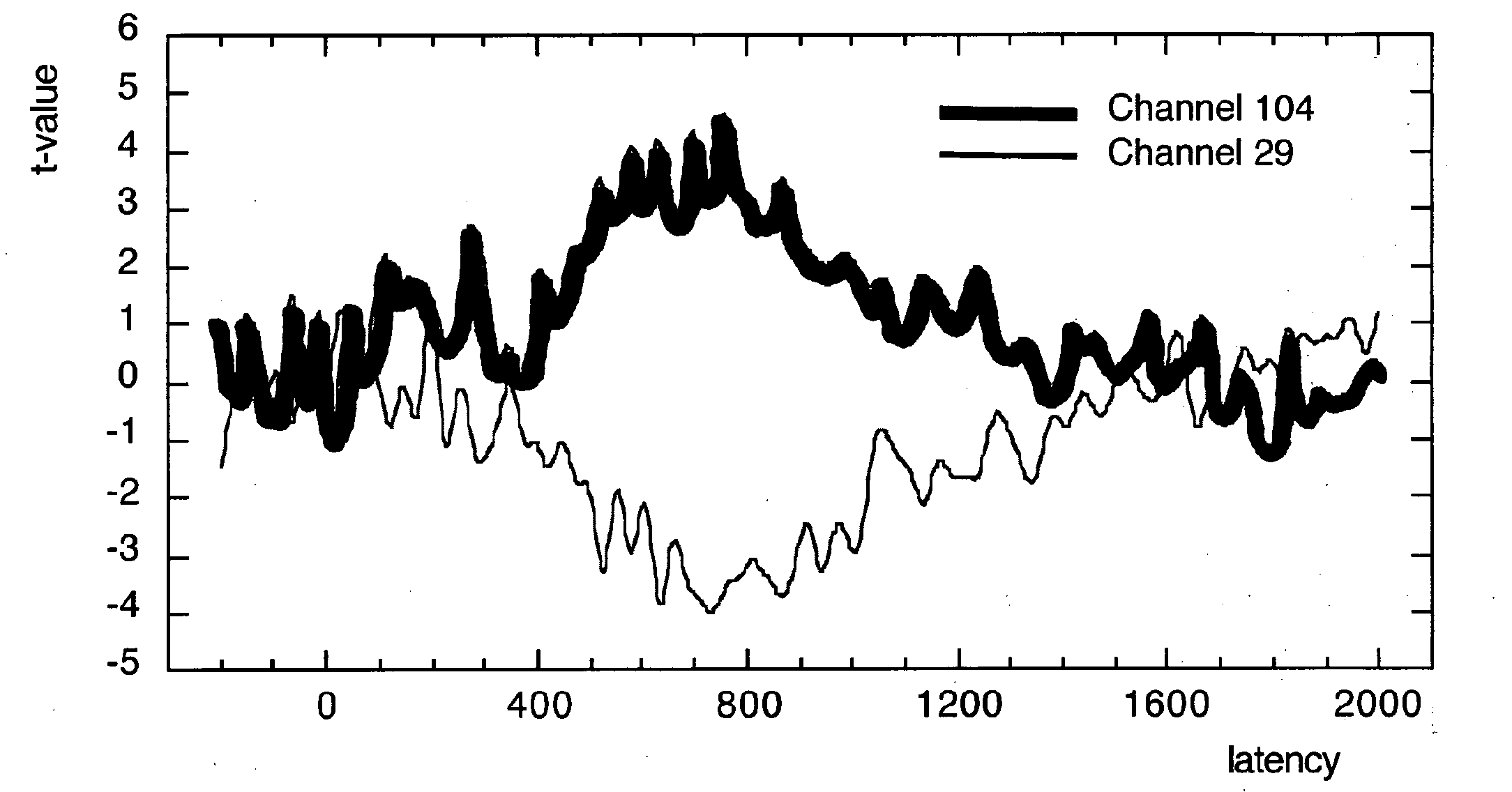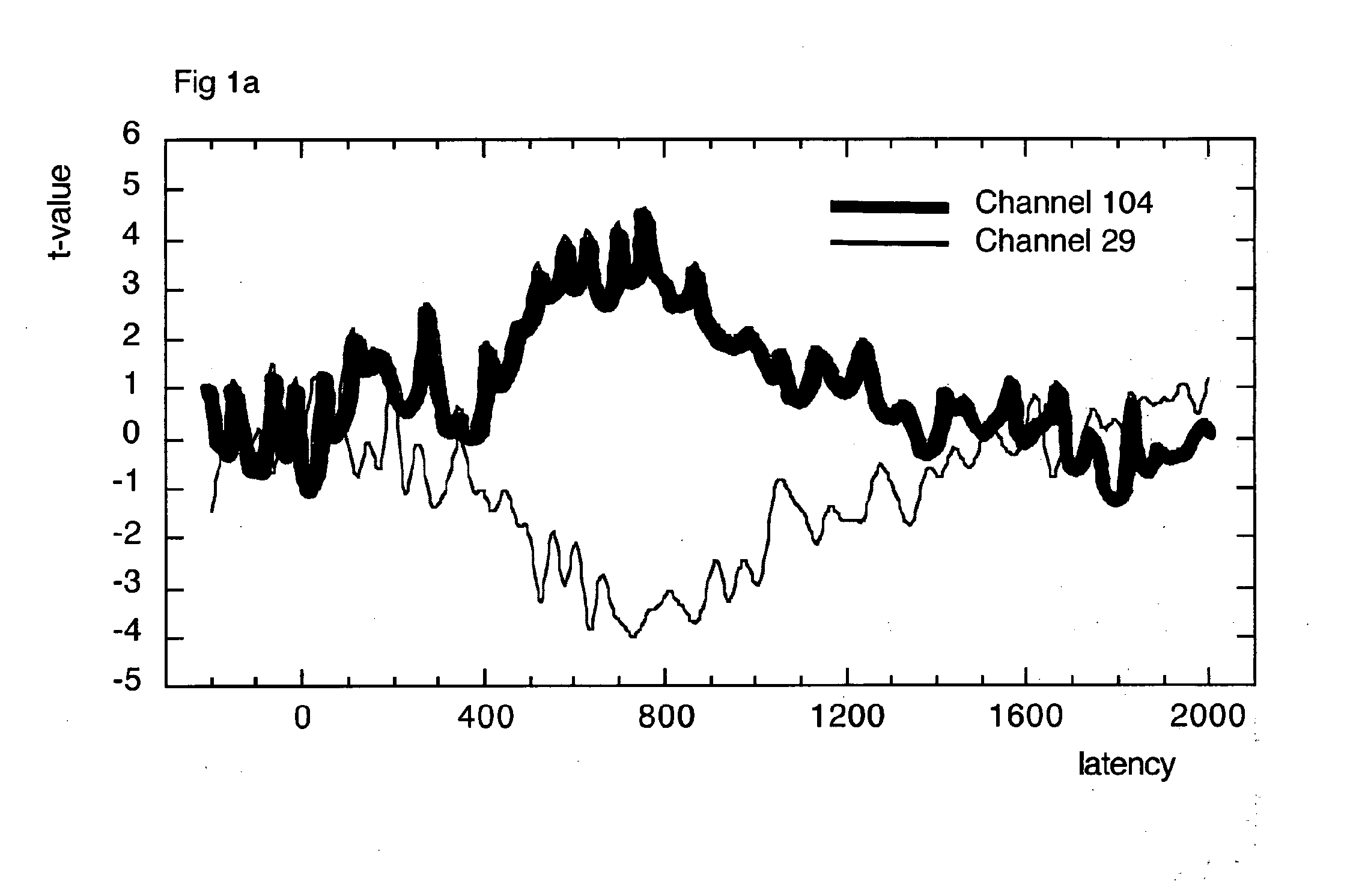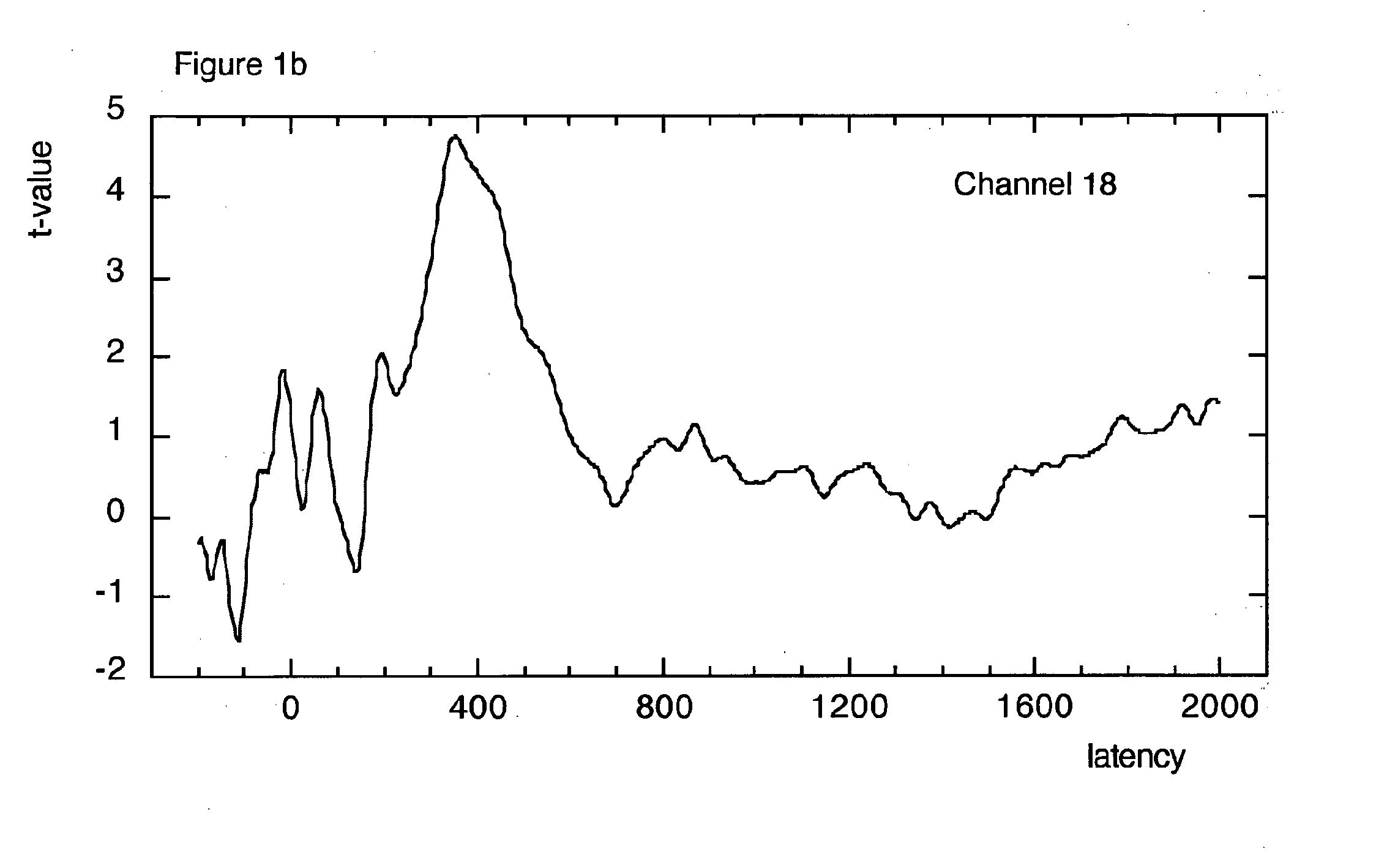Investigating neurological function
a neurological function and neurodegenerative disease technology, applied in the field of neurodegenerative disorders, can solve the problems of inability to conclude the diagnosis of ad, significant morbidity and mortality, and inability to solve problems that will inevitably increase, and achieve the effects of improving results, reducing morbidity and mortality, and large and reliable differences
- Summary
- Abstract
- Description
- Claims
- Application Information
AI Technical Summary
Benefits of technology
Problems solved by technology
Method used
Image
Examples
Embodiment Construction
General Description
[0040]The present invention relates to a diagnostic tool for the early detection of neurological disorders such as Alzheimer's Disease (AD). The diagnostic tool employs a dense array EEG combined with a cognitive task. Dense array EEG is a measure of brain electrical activity at very high spatial and temporal resolutions. These measures are combined with a cognitive task which taps into mental functions known to be vulnerable in the early stage of AD. The invention is designed to provide positive information about the likely presence of changes in cognitive and brain function consistent with a diagnosis of potential AD.
Functional Components
[0041]The invention comprises three main functional components.[0042]A computerised cognitive task. This is a simple two-part choice task in which patients are asked to decide whether each test stimulus has been presented before or not. Stimuli consist of coloured line drawings paired with clearly spoken words. Responses are mad...
PUM
 Login to View More
Login to View More Abstract
Description
Claims
Application Information
 Login to View More
Login to View More - R&D
- Intellectual Property
- Life Sciences
- Materials
- Tech Scout
- Unparalleled Data Quality
- Higher Quality Content
- 60% Fewer Hallucinations
Browse by: Latest US Patents, China's latest patents, Technical Efficacy Thesaurus, Application Domain, Technology Topic, Popular Technical Reports.
© 2025 PatSnap. All rights reserved.Legal|Privacy policy|Modern Slavery Act Transparency Statement|Sitemap|About US| Contact US: help@patsnap.com



